Media | Articles
The Color of Monotony
As I sat waiting to turn left at a busy intersection, I noticed the five late-model cars across from me only because all of them were white. I looked around; every car waiting or whizzing through the intersection for a full minute was white, black, gray, or silver. Suddenly, a red Toyota Highlander appeared, and it stood out like Jessica Rabbit in a nunnery. The 1973 Land Rover in which I was trundling to the local cars and coffee is painted a yellowish tan known as Limestone. In those days, black was for limos and hearses and white was mainly for meat wagons and plumber’s trucks. How things have changed.
The auto industry spends hundreds of millions every year trying to get you frothed about their new cars. Is it working? If not, maybe one reason is that they’ve gone completely colorblind. Lately, the salespeople sliding purchase contracts across their desks—some of them binding people to 72 months of payments—can only offer a car painted to look like coal ash, pencil lead, or fat-free milk.
Ironic in a universe that is intensely colorful. The light spectrum gifts us with a rainbow (literally) of vivid hues, but everyone seems to have forgotten old ROY G BIV in their modern race to be utterly invisible. The industry started this way, with the famously thrifty Henry Ford supplying any color you wanted as long as it was black. However, it nearly put him out of business in the late 1920s as other carmakers, notably GM, began painting with broader palettes. By 1955, Cadillac alone offered 20 choices, from
Bahama Blue to Tangier Tan to Pacific Coral, evoking a seductive life of exotic luxury. The psychedelic ’60s with its Lemon Twists, Grabber Greens, and Vitamin Cs turned every Safeway lot into a festive bag of Chiclets. The 1970s and ’80s had vinyl disco stripes.

Contrast that with today, when one of the market’s bestsellers, the Tesla Model 3, is offered in exactly one standard color: Stealth Grey. It’s basically the color of late winter, of cloud butt. It doesn’t make you yearn to drive so much as hunker inside with a book. Tesla charges $1000 for white, $2000 for red. You’d think a company that can afford to pay its leader $56 billion could comp its buyers a few decent colors. But Tesla is hardly alone in squeezing the color-starved for cash. Take the Porsche 911 Carrera, the $122,095 base price of which somehow affords only two standard colors: white and black. Gray and silver at $830 each are the first rungs in a steep upcharge ladder that reaches all the way to $31,070 for custom paint.
Marketplace
Buy and sell classics with confidence
Noteworthy standouts: Hyundai, Kia, and Subaru, with some attractive greens, blues, and coppery bronzes. VW’s new ID.Buzz gets props for its pretty two-tones. But if you’re seeing less color these days, blame both consumer tastes and cost-cutting. People like white; it is guaranteed anonymity. People like silver; it never looks dirty even when it is. People like black, I guess because it wears its stone chips and swirl marks like combat medals. The industry builds what it thinks it can sell, and dull, non-polarizing colors sell.

It also tries to save money with fewer variations. Any additional color must be rigorously tested for paint-ability and durability. Painting a car to today’s standards of quality and reduced environmental impact involves a laborious dance of robots in hermetically sealed clean rooms spraying fussy but nontoxic waterborne paint, which is cured by time-consuming soaks in drying ovens. The paint shop is the most expensive part of any auto plant, and it’s the choke point, too; typically, a factory’s output is dictated entirely by how many cars it can push through its paint shop. Offering lots of choices only slows things down. For example, pearl coats cost extra because the car must be painted twice, meaning it’s taking the place of another car on the line. Figuring out which colors to paint in what percentages is a potentially expensive guessing game. And less risky if you cut the choices and go with the old standbys.
Which raises a chicken-egg question: Do people actually prefer white, black, gray, and silver, or do they buy these four horsemen of the color apocalypse simply because that is what is available? A bit of both, perhaps. But if you take an older car in one of those gorgeous historic hues and repaint it in one of the above, you are committing a crime.
This story first appeared in the March/April 2025 issue of Hagerty Drivers Club magazine. Join the club to receive our award-winning magazine and enjoy insider access to automotive events, discounts, roadside assistance, and more.

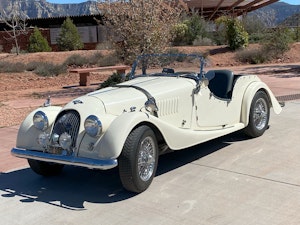
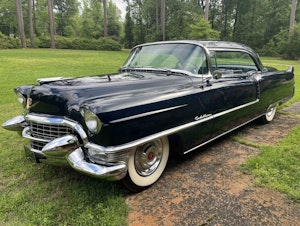

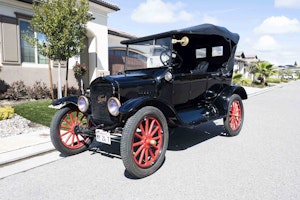


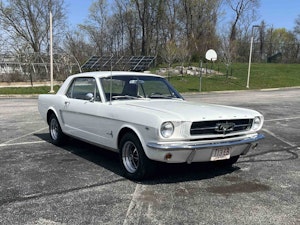
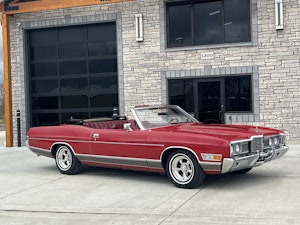





In the mid-1970s, the trucking unit I drove for – which had previously run tractors painted in company colors and trailers with lots of graphics – changed to all-white trucks and trailers with just a decal denoting our name. We were told it was a cost-cutting measure, which I’m sure made some execs happy when they looked at a spreadsheet, but everyone else, from the drivers-to-the-customers (and even the guys at the truck stop fuel islands) hated the look. Plus, the rigs were ALWAYS dirty, which wasn’t a good look for a grocery company. I often wondered if the savings in paint and graphics balanced out the loss of goodwill with the demise of our distinctive look out on the road.
My vintage car is a very bright red, and even though the paintjob is far less that great, I get many comments like ‘what a perfect color for that car”. Even though red is far from my favorite color, it’s obviously a grabber of attention. So yes, I do think that we’ve got a dearth of color out there in the vehicle world right now, but given the costs involved, I doubt if we’re going to see that change.
My latest acquisition just happened to be red, also not my favorite but it checked every other box so jumped. I can admit two things that have surprised me: I’ve warmed up to it, and I’m less likely to misbehave in it since the scofflaw in the shiny red sports car is the most likely citation recipient.
Yep! That was about the time the truck builders went to an all white from the factory approach. The trucks would be delivered to the dealers like that & then custom painted any color the customer wanted. Most fleet owners didn’t see the need to spend extra on colors, so now most big trucks are white.
Up until as late as the 90’s, class 8 truck manufacturers had some intricate paint jobs from the factory. Peterbilt and International had some of the most detailed designs with three or four colors which must have taken up a large amount of time in the paint booth.
There is a comeback of sorts (Kenworth W900 Anniversary editions come to mind) but the standard company white is definitely the norm these days.
Brother, I feel the same way. It’s a rolling billboard that says, “We are proud of our products or services!” While it isn’t free, one would think that more eyeballs on your business draws more customers. Don’t the people in the marketing department have the ear of management or does management only listen to the bean counters?
One issue with the “crime” of painting vintage cars black, white, or gray. A black 2nd generation Charger hardens back to one of the greatest car chases ever filmed.
There are instances where this just works. White is very “grandma” feeling to me, but absolutely works on a 1960 Galaxie. And black is the my preferred color for a mid-2nd gen camaro, especially with the tan interior (always quite enjoyed that color combo). And let’s not forget the classic black exterior/red interior of the early 60’s cars.
I’m still trying ti figure out what high-impact color to paint my ’70 Coronet 500. Imputs are welcome.
EV2 HEMI Orange / Tor Red
I had the option of something other than gray when I bought my IS 500 and went for Infrared. The color just pops and looks great. Gray or black is overdone. I already have a silver car and a gray car, don’t need another.
F8 Green?
Aaron, a minor correction if I may. Waterborne paint is FAR from nontoxic.
One has to consider the shade of color: my bright white daily driver – bought used, for its condition rather than color – is about as anonymous as it gets. Softer whites are more interesting to me. Some shades of silver are more interesting than others. Equally important are interior colors: I miss the blues, greens, and burgundies. Tans & browns are fine on rustic homes, but to me are unattractive on vehicles.
There have been several articles about the prevalence of greige cars. It mostly boils down to the myth that non colors have the highest resale value so dealers don’t order the colors and people are buying what’s on the lot. There are exceptions like Mazdas which are often seen in the signature Soul Red Metallic or first generation Kia Souls in Alien Green.
As I said, the resale value of gray is a myth, the distinctive colors often sell for more. I’m doing my part, I have 3 red vehicles in the fleet, and one pearl white. On a related note the gloss gray is a trend that was interesting for 5 minutes, 5 years ago I’d like to see a colorful Toyota Tacoma for a change
My Chevy is a one option car and that package only came in black. I was ok with that. I bought my Jeep used and everything I found during my search was black or white. I picked a black one as the lesser of two evils. Lord willing I will have a car that is red or blue or green or something other than black, white silver or grey before I die!
We’re trying to do our part with a red Volvo, a red MINI JCW, and a red ‘classic’ Mini Cooper.
And like Steve mentioned earlier, I am so tired of nothing but black interiors. Blah!
One more thing… Back in 1970, I believe Plymouth simulated a Cuda like the lead photo for this story. It was part of the sales brochure showing off all the colors offered that year
You are correct Paul. Tim recreated the look to put in his museum. If you have never been there, it is well worth a road trip to see the museum.
In 2022, I purchased a new Toyota RAV4 and I had to wait 6 months for it to arrive because I specified Cavalry Blue. It was worth the wait. Unfortunately, it has the required black interior.
I have to take issue with the pronouncement of white as the equivalent of “fat-free milk.” I own a white 2007 Porsche 997 S4 with Stone Grey interior which, IMHO, is a stunning combo — and I find that people at various events seem to agree (helps that it was an Arizona car and the windows are tinted for a “storm trooper” effect). Also, it’s not exactly a common color for a 997 — it took me almost a year to find the beast. Yeah, silver can be boring, and black gets dirty the minute you turn your back on it, but I humbly submit that on the right car, white works.
Although most of my friends Corvettes are painted some shade of red ( Magnetic, Torch etc) I can’t imagine my ’13’ Grand Sport in another color than the Arctic White with the Silver stripes. For me, it’s perfect.
I spent 45 years helping car owners bored with the colors offered by automakers. Hand-painted pinstriping helped them cope with boring pigmentation by personalizing their rides with custom pinstriping without breaking the bank. And then we have the automotive artists who do graphics and mild to wild designs for people who are individualists and want cars that make a statement.